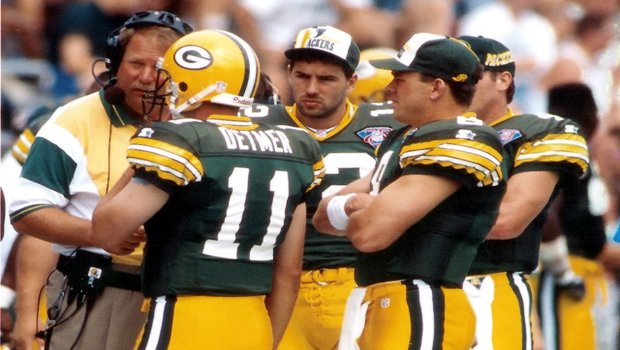What if… Brett Favre was not medically cleared to play for Green Bay?
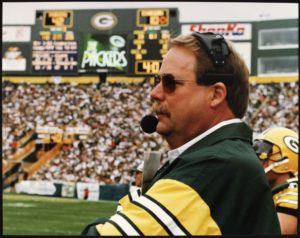
In 1992, the Green Bay Packers had a new head coach in Mike Holmgren. Holmgren’s claim to fame was running the San Francisco 49ers offense for several years while quarterbacks Joe Montana, Steve Young and Steve Bono excelled. Don Majkowski, affectionately known as the “Majik Man” by the fans, was the starting quarterback. Majkowski had been starting off and on since his rookie year in 1987, with a breakout year in 1989 where he led the league in passing yardage (4,318) along with tossing 27 touchdowns. Majik suffering a torn rotator cuff on what was deemed to be a dirty hit marred the following season for himself and the Packers. An attempt to comeback in 1991 saw Majkowski play poorly enough that former Chicago Bear Mike Tomczak was enlisted to start many games in Majik’s place.

As Holmgren prepared for his first season with the Packers, he sought more options at quarterback. Majik and Tomczak just wouldn’t do. The Packers held picks number 5 and 19 overall in the draft. Rather than wait and see if any quarterbacks they desired would fall to them, general manager Ron Wolf made a bold move, and one that really didn’t make much sense on paper. Wolf sent the 19th pick in the draft to the Atlanta Falcons for Brett Favre, a strong armed third-string quarterback. At this point Brett was more known for his drinking than his playbook study. Favre had been scouted and desired by Wolf a year earlier while Wolf worked for the New York Jets, however, Wolf couldn’t seal a deal that would move the Jets ahead in the draft enough to pick Favre. The Jets settled on quarterback Browning Nagle, a total bust who managed to win just 4 games over a five-year span where he bounced around from the Jets to the Colts and finally Atlanta. He finished his career with 8 touchdown passes.
Favre was subjected to the standard physical tests that come after a trade, and the Packer team doctors discovered he had avascular necrosis in his hip, a condition where blood is not properly supplied to the socket. The Packers had every right to deny the trade on medical grounds, with the doctors figuring Favre would need hip replacement surgery within 3-5 years that could potentially end his career on the spot. Wolf ordered the trade to go through nonetheless. However, for the sake of this exercise, I’m going to speculate on what would have become of the Packers if Favre was indeed sent back to Atlanta.
The 1992 Draft
The draft is the first thing that would probably play out differently. With the 5th pick, the Packers would have to be very tempted to draft David Klingler. Klingler had eye popping stats in college, including one game where he threw 11 touchdowns, and another where he tossed for over 700 yards. The Packers went with cornerback Terrell Buckley in reality, with Klingler going one pick later to the Bengals. He’d end up winning only 4 games in 24 starts before being booted from Cincinnati. Klingler would ride the bench for the Raiders for one year, before trying and failing to latch on with the Packers to be Favre’s backup. He moved into retirement in 1998.
The next quarterback taken was Tommy Maddox, who was taken at pick 25 by the Broncos. Would Maddox possibly have been taken at pick 19 if the Packers passed on Klingler? Maddox was drafted to be John Elway’s heir apparent, but he was unimpressive in his limited playing time. Coaching changes and salary cap issues forced Maddox to be traded to the Rams two years later, where he rode the bench for a year. He rejoined his Denver coach Dan Reeves with the New York Giants for a season, then again rode the pine when Reeves took over for the Atlanta Falcons.
Maddox would be ousted from the NFL, only to make an improbable comeback after excelling in Arena football and in the XFL. His second life as an NFL quarterback came with the Pittsburgh Steelers in 2001, where Maddox spent several seasons trading starting time with Kordell Stewart before being supplanted by rookie Ben Roethlisberger. Maddox would earn a Super Bowl ring as “Big” Ben guided the Steelers to a victory over Holmgren’s Seattle Seahawks. Maddox under the guidance of Holmgren in Green Bay would not have netted him any promises of success, and instead could very well have driven the team’s rebuilding process back a few extra years.
The quarterback class falls off steeply at this point, with Matt Blundin and Tony Sacca going in the 2nd round, with both spiraling into obscurity. Craig Erickson went to Tampa Bay in round 4. Erickson was coming off a serious knee injury and had actually been drafted the year prior by the Eagles, but they could not come up with a contract agreement since Erickson’s future was so murky. This led to him reentering into the draft. Erickson played early, but never turned any heads with his stats. He was eventually replaced by Trent Dilfer, leaving Erickson to spend the next several years as a journeyman. He spent time behind Jim Harbaugh with the Colts, then Dan Marino with the Dolphins before retiring. He would have proven to be a tempting pick for the Packers, as the upside potential was there. Erickson was penciled in originally as a first or second round pick prior to his knee being torn up.
The draft moved along with Casey Weldon, Will Furrer and Chris Hakel being taken at quarterback. Calling their NFL careers non-descript would probably be serving them too much justice.
Jeff Blake went next at number 166 to the Jets. Blake never excelled, but he wound up starting extensively for the Bengals, before bouncing around to 5 other teams as he stretched his career out to 2005. Kent Graham followed at 211th overall. He too moved around to multiple teams over the next 10 years, starting sporadically and sometimes successfully. Both men were raw, but could have been serviceable with a few seasons of grooming.
Quarterbacks Bucky Richardson and Mike Pawlawski were drafted next. They may as well have immediately entered the witness protection program, never to be heard from again.
The final three quarterbacks taken were all actually notable. Brad Johnson went to the Vikings at 227th overall. He’d spend several years being groomed under Rich Gannon, Jim McMahon and Warren Moon before becoming a capable starter himself. Johnson would play up to 2008, leaving with a few Pro Bowls to his credit and nearly 30,000 yards passing. He would have been an ideal type of talent for Holmgren to fine tune into a workable starter.
The Rams snagged T.J. Rubley next. He had potential talents, and seemingly was even on the radar of Holmgren and Wolf, as they brought him to Green Bay after Rubley sat and learned for three seasons with the Rams. Rubley would enter into Packer historical infamy in 1995 after coming in to play as the emergency quarterback in a game tied at 24 in Minnesota. Coach Holmgren called for a QB sneak in short yardage late in the game, but Rubley called an audible and instead threw an interception. The Packers went on to lose the game and Rubley was cut immediately. His roster spot was taken up by former Chicago Bear star Jim McMahon.
The last quarterback taken in the draft was Ty Detmer. The diminutive (6’0, 190 pounds) Heisman trophy winner found himself in the safest spot in the NFL…Brett Favre’s backup. After several seasons of nurturing under Holmgren, Detmer moved onto Philadelphia, there is saw action in 13 games and helped guide the Eagles to the playoffs. Detmer would migrate to several different teams, generally being used to help ready young quarterbacks for starting roles. Detmer was not a long term answer at quarterback due to his size, but he made for a good fit in many locker rooms, including in Green Bay.
In House
As I stated earlier, Majkowski was coming off of a harsh injury and playing poorly, so he was no longer a suitable option under center for the long term. Assuming the draft plays out the same, that leaves Ty Detmer as your developmental quarterback and Mike Tomczak as the experienced back up. However…Tomczak never reported for training camp as he was holding out for a new contract. The Packers ended up cutting him at the end of August. With free agency not yet an option, this would mean that a Favre-less Green Bay would either have to find a cut player who might be able to be rejuvenated or else make a trade. The Packers had 13 draft picks before the Favre deal, so they had ammunition for some moves.
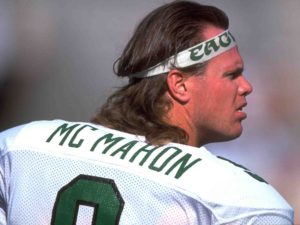
One interesting option for a trade may have been for Eagles’ quarterback Jim McMahon. McMahon was already 33-years old by that point, but he had just come off a season where he led the Eagles to eight wins in eleven starts after Randall Cunningham went down for the year. McMahon had a history of injuries, but had enough gas left in his tank to go on to start twelve games for Minnesota in 1993. He could have served as viable competition for Majkowski and played a role in Detmer’s growth.

If the Packers were willing to role the dice for a year, the 1993 off-season would provide another major opportunity to shake up the quarterback position. Living legend Joe Montana was ready to comeback after missing the 1991 and 1992 campaigns for the San Francisco 49ers due to injuries. The Niners wanted the 37-year old quarterback to return to a starting role, but Steve Young was not pleased with the idea of being benched after performing well in Montana’s place. A rift formed in the locker room and Montana forced the Niners hand to have him traded. The Kansas City Chiefs ultimately gave up the 19th overall pick in the draft to inherit Montana. If Favre is not on the Packers roster, matching coach Holmgren with the QB he rode to Super Bowl glory with doesn’t seem all that unlikely.
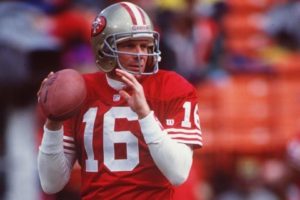
However, a high draft pick for an old quarterback may not have played out well in the media. The Packers executed what is largely believed to be the worst trade in NFL history in 1974 when head coach and general manager Dan Devine sent two first round picks, two second round picks and a third rounder for 34-year old John Hadl, who had been sitting on the sidelines for the Rams after being benched for poor play. Hadl bombed out as a Packer and Coach Devine left the Packers high and dry 54 days later as he moved on to coach Notre Dame.
The 1993 off-season did see the Packers make a trade for a quarterback, as 33-year old, two-time Pro Bowler Ken O’Brien was sent from the Jets to fill out the team’s need for a veteran back up to the erratic Favre. O’Brien’s big salary (nearly 2 million dollars) and lackluster pre-season play saw him cut before the regular season began.
Future Drafts
A big reason O’Brien was expendable was due to the team drafting Mark Brunell in the 5th round of the ’93 draft. Brunell would show his talents early on, and threatened Favre’s job at times when Holmgren sought relief from Brett’s wild gun slingin’ style. The following off season, a little known quarterback named Kurt Warner was brought in to be a camp arm, but he was admittedly so intimidated by the experience he couldn’t perform. In a scenario where Favre is not with the Packers, perhaps Warner is placed on the practice squad to develop as Brunell serves as the starter from 1994 on. This probably means the Packers finally move towards respectability a few years later than what went down in reality.
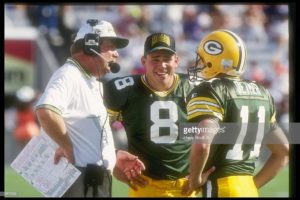
What about Brett?
So what becomes of Favre if he remains on the Falcons bench for a few more seasons? Would he remain bored by inactivity and stunted by the allure of alcohol? With his unteachable God-given arm strength, one would have to assume other teams would seek him out once he hit free agency. Perhaps the Packers themselves would kick his tires a few years later? Favre may have been a vagabond, an arm-for hire, driving coaches mad as he tossed long, impossible passes on one down, only to blunder his next toss. Favre’s future success would probably mirror real life, where only if and when a coach was willing to geld his weaknesses and suffer through giving Favre enough reps that he pulled his own on the field game together that Brett would find success. If not, he may have ended up as the next Jeff George or maybe worse.
One final X-factor in all this to consider is if Brett Farve isn’t the Packers quarterback in 1992, does defensive end Reggie White still see enough potential in the team to accept their mega money offer for his services a season later? That opens up a can of worms big enough to be an article all it’s own. I’ll explore a “What if?” revolving around Reggie White next time.

